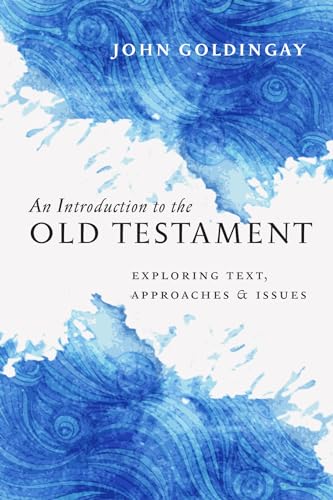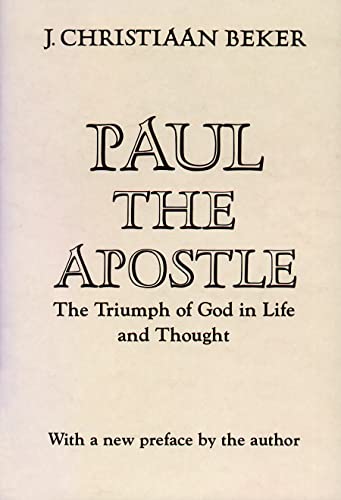Man and Woman in Christ: An Examination of the Roles of Men and Women in Light of Scripture and the Social Sciences
Written by Stephen B. Clark Reviewed By Gordon WenhamFew works of theology merit the description ‘eye-opener’, but for me this was one of those rarities, a book which fundamentally altered my understanding of social history and with it my conception of the task of applying biblical principles today. Though it focuses on the particular problems of male and female roles within the family and in the church, in so doing it sheds much light on broader issues of biblical ethics and hermeneutics.
Clark begins by looking at Genesis for its teaching about human nature, for this is what Jesus did when challenged about the nature of marriage. Clark argues that whatever view Christians take of the historicity of Genesis 1–3, they must regard these chapters as divine revelation setting out the divine purpose for mankind: men and women are to be partners who complement each other. But woman is seen as subordinate to man just as in a team the other players acknowledge the captain’s authority. This subordination preceded the fall: it is part of the order of creation. But as a result of the fall this relationship has been corrupted into a situation where men tend to exploit and dominate women.
Clark then proceeds with great thoroughness and attention to detail to examine every biblical text bearing on the roles of men and women in Israel and in the early church. Though there is little original here that cannot be found in standard commentaries and reference works, Clark does take the opportunity to expose the inadequacy of popular feminist exegesis of these passages. It is certain that the biblical writers envisaged men exercising leadership in home, the community and the church.
Part 2 (pp. 233–367) entitled ‘Assessing the Scriptural Teaching’ deals with the distinctiveness, consistency and applicability of the New Testament teaching about male and female roles. Clark asks whether the New Testament teaching is simply a perpetuation of earlier social patterns, whether the New Testament writers agreed with one another on these issues, and whether this social teaching is part of the deposit of faith which ought to be maintained for all time. Again Clark answers these questions more carefully and thoroughly than any other writer I have met.
When New Testament teaching is compared with Old Testament and primitive Jewish attitudes it is seen to be distinctive in three ways. (1) Under the new covenant there is no difference in spiritual status between men and women, Jew and Gentile. All become one in Christ. Thus women took a greater part in worship. (2) There is in New Testament teaching a greater stress on the subordination of women and its corollary that men should care for women. (3) The marriage bond was strengthened by outlawing divorce and polygamy, which were permissible under the old covenant.
On all these points Paul and Jesus agreed, but Paul emphasizes the first two points more clearly than Jesus, probably because they were alien to many of his Gentile converts. The section closes with a closely reasoned defence of biblical authority, which is of course of far wider relevance than the particular issues discussed in this book.
Most evangelical treatments would have ended at this point. Having established what the Bible teaches, authors usually leave the reader to try and apply it himself. But Clark is only half way. And it is in the second half of the book that I really came to appreciate the magnitude and complexity of applying biblical principles to late-twentieth-century society.
Part 3 (pp. 369–570) entitled ‘The Scriptural Teaching in Contemporary Society’ begins with a summary of the main differences between men and women established by psychologists and sociologists. Besides the obvious physiological differences a great number of smaller but significant differences between the sexes have been noted. For example, just as the average man is taller than the average woman, so he tends to be a bit more pushy and less affectionate than her. The combination of all these characteristics has led to every society throughout the world being patriarchal, that is men are always more prominent in leadership roles, tend to occupy the more prestigious jobs, and are expected to take the initiative with women. Clark reviews the various theories that have been put forward to explain these phenomena. He prefers a structuralist explanation to others such as S. Goldberg’s (The Inevitability of Patriarchy) biological explanation, though the latter has the merit of simplicity and openness to experimental verification. But whatever view is taken, it seems certain that despite the efforts of the Equal Opportunities Commission and similar bodies, society will remain essentially patriarchal. Nevertheless Clark maintains that attempts to minimise the differences between male and female roles have already had serious effects: family life has been weakened, sexual relationships troubled, women have lost a sense of value, female roles are neglected, and so on.
If neither Scripture nor the social sciences support feminist views, where do they come from? Clark argues that they are essentially the product nineteenth-century political ideologies, such as liberalism and socialism, coupled with the industrial revolution which destroyed the structures of traditional society.
The gulf which separates our society from the seventeenth century is wider than that between the seventeenth century and the first century ad. Traditional society was static: nearly everyone’s social situation was determined by his birth. In our society blood relationship simply determines who your relatives are. In traditional society it determined also your residence, place and type of work, and carried with it a whole set of life-long obligations and rights. In other words everyone belonged in a tightly-knit community. Our society sees itself as a collection of individuals all more or less equal and independent, each one looking for self-satisfaction and personal advancement. Now instead of birth determining one’s career, it becomes a question of acquiring the necessary skills to find and succeed in a job. And in our technological society the nature of work has altered profoundly. Because modern work requires a high level of skill, everyone has become specialized and the work is divorced from the home. Food production, education, caring for the sick and the needy are now carried on outside the home by specialist farmers, teachers, doctors and social workers, leaving the home as a place for sleep and recreation. It is out of this background that women’s liberation movements have grown. On the one hand there is the ideological assertion that equality involves role identity. On the other there is the emotional impoverishment, particularly of women, when the mobile nuclear family replaces the stable extended family and the varied activities that centred on the traditional home have been hived off to specialists.
It is against this analysis of the structures of modern society that Clark eventually in Part 4 (pp. 573–667) comes round to ‘A Christian Approach for Today’ and attempts to apply biblical principles to our situation. Conformity to biblical principles is not secured simply by refusing to ordain women and telling them to stay at home and wash the dishes. The early church was above all a community in which both men and women played active and complementary roles. Women participated in worship, worked alongside men in evangelism, educated the children, looked after the sick and the poor, and opened their homes to the needy. The men led the community and had the responsibility of caring for their wives and the women who helped them in the church.
Given the altered structures of our society it is impossible to recreate fully the community that characterized early church life. Nevertheless if we accept biblical authority we must try to go some way towards it, for it is through community life and above all the family that the character and love of God can be made visible. We are not called to drop out from modern technological society, but we should try to live as a Christian community within it. In the church and in the family men should play male roles and women female roles. In the beginning God did not make mankind unisex, nor does he expect his new creation the church to abolish sex-role differentiation. As song is enriched by singing in parts, so is the church when it recognizes and cherishes diversity of roles among its members. And Christian parents should recognize this too, training their boys to be manly and their daughters to be feminine. Above all we need to work to restore community and fellowship within the church. The home should not be a castle cut off from the world, but a centre pulsating with the life of the extended family, and offering love and support to all in the church who need it.
With this challenging vision of what the church ought to be like the book ends. It is worth selling your shirt for, as Dr Packer used to say. But if you have already done that, insist your library obtain a copy; that will at least ensure others can read it too.
Gordon Wenham
Cheltenham and Gloucester College







